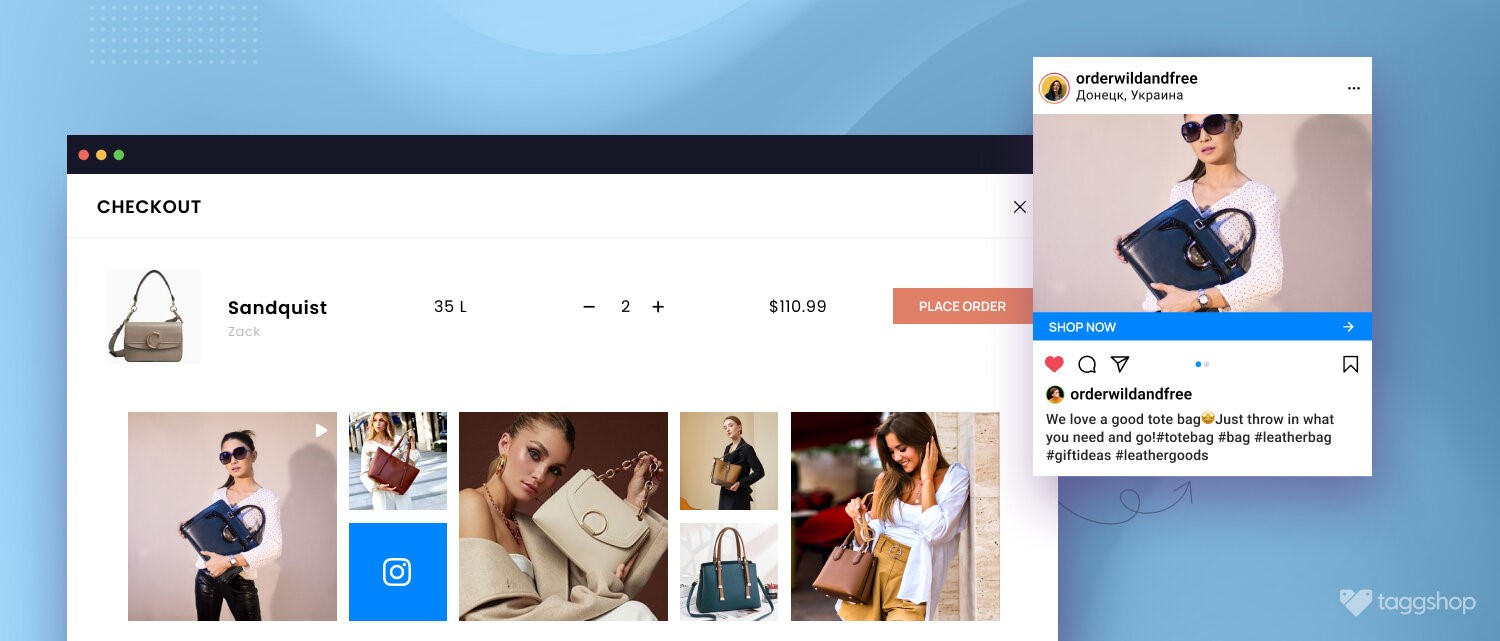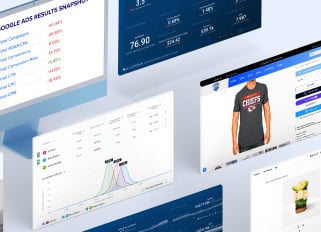
Top 10 Reasons Your eCommerce Business Needs Social Commerce
Everyone in today's digital world uses social media platforms because of their numerous benefits. There are over 4.55 billion active social media users worldwide.
For e-commerce businesses, social media is an unavoidable channel through which they can reach out to potential customers.
You can use social media & social commerce to not only promote your products and services and learn about your competitors and your target audience's preferences.
For e-commerce businesses, social media is the best way to reach the right audience at the right time.
If the content piques the public's interest, it will boost sales, traffic, and customer loyalty.
Top 10 Reasons Your Ecommerce Business Needs Social Commerce
Helps Reach Potential Customers
Shopping has become more enjoyable and interactive as a result of social media. It now includes social commerce and much more than simply socializing with friends and family.
Consumers take various actions, such as seeking inspiration from people and brands, leaving reviews, and directly messaging brands for purchase.
Businesses that use social commerce are paving the way for their growth by making their brand more accessible to all as more consumers join social media sites worldwide.
Builds Real Relationships
You cannot ignore social media channels when developing an omnichannel marketing strategy. Customers prefer brands that interact with them on social media because they want to know that you have a voice as a brand.
You can use social media to see how people talk about your brand and the customer experience. It is essential to the omnichannel customer experience, allowing brands to provide exceptional customer service.
Boosts Customer Engagement
Social media platforms enable two-way communication between your company and its customers. It not only helps you promote your products, but it also allows your audience to connect with them.
On these channels, users are more likely to read reviews, comments, and opinions from previous customers. This increases the authenticity of your company and allows them to make an informed decision.
Some channels go even further, assisting you in creating a seamless shopping experience with them. Instagram, for example, has introduced Shoppable Instagram Feed, which allows you to tag your products gathered from user-generated content or your posts and embed them directly into your eCommerce websites.
As a result, shoppers can easily navigate to the correct product page with just two or three clicks.
Increases Average Order Value
It is no secret that millennials are the most active social media users. As a result, brands and businesses now understand the millennial market dynamics and how to cater to them.
Seamless shopping experiences, direct checkout, interactive lookbooks, and other similar features are excellent ways to persuade these users to shop more online.
It also raises your average order value (the amount of money customers are likely to spend in one transaction) based on the content shared on your audience's social pages, the ease of the purchase cycle regardless of the device they use, what their friends and followers are shopping for these days, and so on.
The point is that social media can influence users to spend more money. You can use this information to curate better recommendations for your customers.
Additionally, integrating your multichannel management platform with your social channels can assist you in synthesizing the datasets into actionable insights.
Amplifies Brand Reach
When it comes to marketing, the importance of word-of-mouth cannot be overstated. According to a recent study, people are more likely to buy a product or work with a company that friends have recommended.
And social media is an excellent platform for spreading the word about your products and services. Your audience and engagement levels grow as buyers share and repost your products.
Furthermore, tagging allows your customers to recommend your brand easily. According to statistics, people are more likely to purchase something if it has been recommended by someone they follow.
The advantage is straightforward: get people talking, and your sales increase.
Additionally, integrating your multichannel management platform with your social channels can assist you in synthesizing the datasets into actionable insights.
Offers Frictionless Shopping Experiences
Consumers are shopping in more places than ever before. However, before making a purchase, they can visit a variety of online and offline websites.
Real interaction is possible with an omnichannel retail strategy that includes social media. It enables your customers to shop through any medium, at any time, and from any location.
This results in a one-of-a-kind, comprehensive, and seamless shopping experience for your customers, breaking down barriers between channels.
Targets Customers With User-Persona
Social commerce enables brands to reach out to specific audiences based on a wealth of customer data.
It allows brands to tap into consumer behavior and place products before their eyes, where they will eventually buy them.
Social monitoring and listening enable you to tap into what your target market is interested in, potentially revealing shared interests and concerns that you would not have associated with your target market.
As a result, developing user personas through social commerce can assist you in targeting different buyers.
Enhances Conversion Rates
Mobile devices are used by 90% of social media users to access these platforms. In addition, its user-friendly social commerce features have made it the most popular shopping option.
Customers can easily find the brands by searching for product-related keywords, adding them to their shopping cart, and purchasing them with a single click.
By tapping into consumers' behaviors without interfering with their social activities, social media transforms shopping into a social experience.
Brings Omnichannel Experience To The Table
A retail omnichannel strategy is critical for increasing physical and online sales, developing customer relationships, establishing your brand, and increasing the customer's share of spending.
For example, you could announce your latest sales on social media and encourage customers to visit your physical stores.
Similarly, when customers buy from your retail stores, you can invite them to follow your social accounts. Again, this improves reciprocity when dealing with a customer.
Uplifts Brand Awareness
Social media has become the most direct form of communication for the digital generation. This means that it should be part of your omnichannel experience because it will help you increase your brand's visibility.
When more people talk about a brand, it reaches a larger audience, increasing brand awareness and social presence.
Wrapping Up
Customers will notice that you take social media seriously once you embrace social commerce. It won't be long before the fruits of your labor become visible. You can have devoted customers who boost your sales and profits. Furthermore, happy customers will be your brand's biggest promoters.
Saurabh Sharma is a Digital Marketing Executive at Taggbox, a leading UGC platform. He has three years of experience in the Information Technology industry. He spends his time reading about new trends in Digital Marketing and the latest technologies.
Connect With Us
Recent Post

.png)








Tell us what you think!